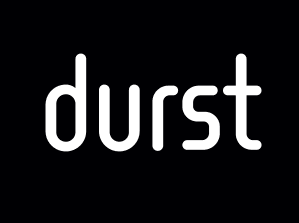As technology continues to evolve and progress, the print industry is seeing a significant shift from traditional methods of operation. New printer technology that allows for variation in the type and size of print runs and shorter lead times, changing customer needs, and an increase in competition have all contributed to this shift. Generally speaking, no longer can print shops have a singular focus and remain competitive. This change has driven print shops to modify their business goals, expand their offerings by converging with other segments, and upgrade their printer technology.
Documented Shift in the Print Industry
This shift in the print industry was documented in a recent study commissioned by Specialty Graphic Imaging Association (SGIA), a nonprofit association for industry, graphic, garment, textile, electronics, packaging and commercial printing, in partnership with NAPCO Research, a division of NAPCO Media. Specifically, the study looked at how print businesses are expanding their service offerings across industry segments and the opportunities that still exist. The study looked at 500 printers across the following segments: commercial printer/publication; graphics and sign producer; in-plant printer; garment decorator; packager/converter (label, folding carton, flexible, corrugated); and industrial printer (including Printed Electronics).
The study found that in effort to best serve their customers, printers had begun to identify opportunities outside their primary segment and consider this expansion into other markets to become a one-stop-shop. Print businesses had discovered that their customers would often come to them with one need only to find they have a considerable need in another area. To best serve their customer and maintain an ongoing productive relationship, print businesses are making the decision to expand their services by expanding into other segments.
Opportunity for Growth
According to the study, many printers felt there was still significant opportunity to grow. Over 80% of respondents believed that the expansion into new segments would accelerate over the next five years. This growth will be seen in the investment in new equipment and software, addition of employees with a specific skill set, as well as an increase in the number of mergers and acquisitions among printers to make a successful entry into a new segment.
Leaders in the print industry expect this convergence of print shops to continue and become a necessity. Customers are coming to expect a print business to accommodate all of their needs and to do it quickly while maintaining a high quality. If a printer cannot accommodate this, the customer will likely look somewhere else as there will be a high number of competitors who can.
A Pioneer in the Digital Print Industry
As a world-leading printer manufacturer, Durst has been a pioneer in dynamic and advanced production printing technology during this significant shift in the print industry. This has been in-part a result of meeting the needs of print customers that have already begun to take advantage of this growth opportunity. Durst has met this demand by introducing print production technology that allows for great flexibility between short and long runs, maximum uptime, and a commitment to environmentally friendly technology while maintaining the high-quality output that Durst is known for. Durst advanced digital printing and production technology provides the ideal innovative printing solutions for increased value to enhance and grow your business.
A prime example of this is the most recent addition to Durst product offerings, the P5 Series for large format digital printing, leading the next generation technology in large-format digital printing. The first member of this series, the award-winning P5 250 HS, offers technologies that maximize operation and uptime for optimal printing performance and quality. In the packaging segment, the award-winning Durst Delta WT 250 corrugated printer offers multi-pass print technology allowing for 24/7 operation and environmentally friendly water technology. And for dye-sublimation/soft signage printing, the Rhotex 325, winner of SGIA’s Product of the Year Award in 2017 and 2018. The Rhotex 325 has a dual-purpose printing system that combines direct-to textile printing with dye sublimation transfer printing technology. It can alternate between paper transfer and direct printing on polyester-based materials quickly and easily.
In addition, Durst recently revealed two new printing platforms and software solutions – LiftERP and MAPS (Multi Application Platform & Solutions) – to offer comprehensive workflow management. This technology is designed to increase production efficiency while maintaining high-quality output. Durst has made a commitment to provide innovative integrated solutions that are designed to streamline processes to offer customers maximum growth opportunity.

